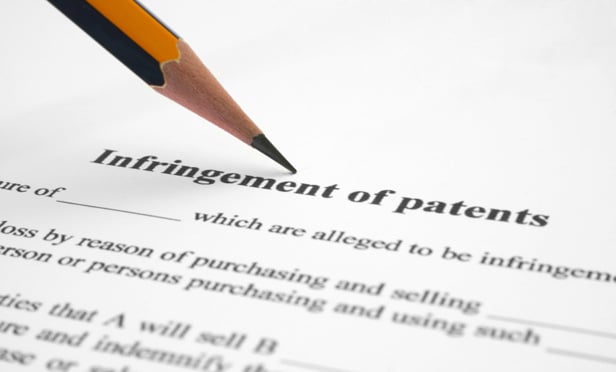Features

The Ripple Effect of Rejecting Trademark Licenses
<b><i>The First Circuit Widens the Controversy</b></i><p>In <i>In re Tempnology</i>, the First Circuit held that the debtor's rejection of a trademark license strips the nondebtor licensee of any right to continue to use the trademarks. In so doing, the court takes the same approach as the Fourth Circuit and rejects the approaches advocated by the Third and Seventh Circuits.
Features

A Reasonable Royalty Rate Must Be Tied to Facts
<b><i>Exmark Manufacturing Company Inc. v. Briggs & Stratton Power Products Group, LLC</b></i><p>The rate of the reasonable royalty awarded to a successful patent plaintiff must be based on the facts of the case. A damages expert cannot merely pay lip service to the <i>Georgia-Pacific</i> factors and then “pluck” a royalty rate from thin air.
Features

How Ticket Software Lost Trade Secret Protection
Trade secret protection applies only to confidential information. In almost all circumstances, broadcasting to the world the intricate details and applications of a trade secret extinguishes whatever “property right” an entertainment industry holder once possessed. What is a sufficient method of contractually notifying a software user of the trade secret status of certain information is a closer question.
Columns & Departments

IP News
Claim Preclusion Requires Analysis that Claims in Newly Asserted Patents are Patently Indistinct from Claims in Previously Adjudicated Patents<br>Claim Elements Taught by Prior Art for Purposes of Novelty and Obviousness are not Necessarily 'Well-Understood, Routine, and Conventional' Under §101
Features

How Ticket Software Lost Trade Secret Protection
According to a recent case from the U.S. District Court for the Southern District of New York involving live-event ticket sales, a purported holder of a trade secret cannot omit a confidentiality provision from its terms of use and then claim trade secret status afterward.
Features

Will the Supreme Court Seismically Shift the Patent Damages Landscape in <i>WesternGeco v. ION</i>?
The U.S. Supreme Court recently agreed to consider whether a patentee may recover foreign lost profits resulting from infringement of a United States patent.
Features

Even the Value of the Smallest Salable Unit Must Be Apportioned
<i><b>Finjan, Inc. v. Blue Coat Sys., Inc.</b></i><p>The Federal Circuit ruled that basing a reasonable royalty calculation on the “smallest salable unit” does not obviate the need to apportion damages to the patented contribution within that unit.
Features

Takeaways from the Swift End to <i>Waymo v. Uber</i>
The details might not be quite as dramatic as they were in <i>Waymo v. Uber</i>, but lawyers expect trade secrets to continue to be a fertile source for litigation.
Columns & Departments

IP News
Federal Circuit Vacates Noninfringement Decision Finding a Genuine Dispute as to Divided Infringement<br>Patent Trial and Appeal Board Holds Sovereign Immunity No Defense to IPR Petition Brought by Accused Infringer
Features

Federal Circuit Holds That PTAB's Determination on Whether the One Year Time-Bar Is Triggered in <i>Inter Partes</i> Review Is Reviewable on Appeal
On Jan. 8, 2018, the Federal Circuit issued its significant <i>en banc</i> decision in <i>Wi-Fi One, LLC v. Broadcom.</i> In that decision, the Federal Circuit held that the time-bar of 35 U.S.C. §315(b) is reviewable on appeal, thus overturning a prior panel decision and opening the door for parties to challenge how the USPTO has interpreted and applied that statutory provision.
Need Help?
- Prefer an IP authenticated environment? Request a transition or call 800-756-8993.
- Need other assistance? email Customer Service or call 1-877-256-2472.
MOST POPULAR STORIES
- Blockchain Domains: New Developments for Brand OwnersBlockchain domain names offer decentralized alternatives to traditional DNS-based domain names, promising enhanced security, privacy and censorship resistance. However, these benefits come with significant challenges, particularly for brand owners seeking to protect their trademarks in these new digital spaces.Read More ›
- Why So Many Great Lawyers Stink at Business Development and What Law Firms Are Doing About ItWhy is it that those who are best skilled at advocating for others are ill-equipped at advocating for their own skills and what to do about it?Read More ›
- The DOJ's Corporate Enforcement Policy: One Year LaterThe DOJ's Criminal Division issued three declinations since the issuance of the revised CEP a year ago. Review of these cases gives insight into DOJ's implementation of the new policy in practice.Read More ›
- 'Insurable Interest' and the Scope of First-Party CoverageThis article reviews the fundamental underpinnings of the concept of insurable interest, and certain recent cases that have grappled with the scope of insurable interest and have articulated a more meaningful application of the concept to claims under first-party property policies.Read More ›
- Ex Parte Trademark Appeals to District Court — Lessons Learned from the Front LinesAlthough pursuit of an appeal to the Federal Circuit may under some circumstances prove to be quicker and less expensive, appeals to district courts are becoming increasingly attractive given recent changes in the law and USPTO practice in defending these actions.Read More ›
